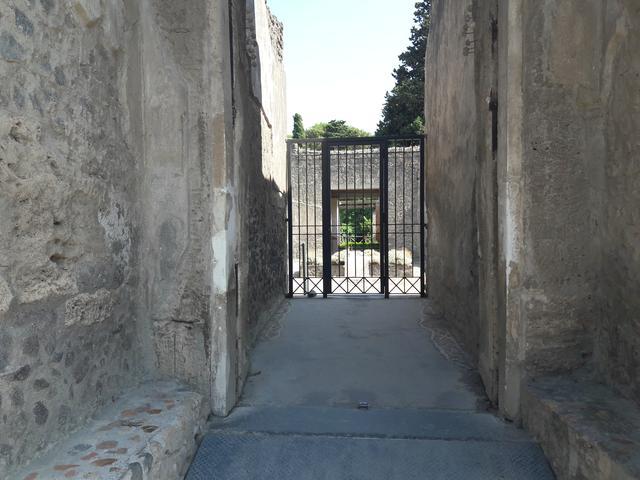Casa de Octavio Quartio

The House of Octavius Quartio, also known as the Casa di Loreio Tiburtino, is a fascinating example of the luxurious lifestyle enjoyed by the elite residents of Pompeii before the catastrophic eruption of Mount Vesuvius in 79 AD. This exquisite residence, resembling a scaled-down version of the grand villas found in the countryside surrounding the city, offers a glimpse into the opulent world of the Pompeian aristocracy. The house features a traditional atrium at the entrance, where visitors can admire the original design elements that have been preserved over the centuries.
One of the most striking features of the House of Octavius Quartio is its meticulously landscaped garden, which extends into two distinct areas at different elevations. The garden is adorned with two artificial channels, known as euripi, that intersect at right angles and are embellished with cascading waterfalls and ornate fountains. The garden architecture incorporates references to Egypt and the goddess Isis, evident in the wall decorations, marble statues, and overall design of the outdoor space.
As visitors explore the upper level of the euripus, they will encounter two rooms that offer unique insights into the daily life and religious practices of the Pompeian elite. A small room dedicated to the goddess Isis in the west suggests a place of worship or spiritual significance, while a double bed in the east serves as an outdoor dining area (biclinio) for hosting guests. A niche resembling a cave is adorned with frescoes depicting mythological scenes, attributed to the artist Lucius who left his signature on the artwork.
The House of Octavius Quartio bears the seal of its owner, Decimus Octavius Quartio, a prominent member of the board of Augusta dedicated to the cult of the emperors. This association with imperial worship underscores the social status and political influence of the residents who inhabited this magnificent dwelling. The meticulous preservation of the house's architectural features, decorative elements, and historical artifacts provides a valuable window into the cultural richness and artistic sophistication of ancient Pompeii.
In conclusion, a visit to the House of Octavius Quartio offers a captivating journey back in time to the lavish world of Pompeii's elite residents. From the elegant atrium to the enchanting garden and intricately decorated rooms, this archaeological gem showcases the wealth, taste, and religious beliefs of a bygone era. Whether you are a history enthusiast, art lover, or simply curious traveler, the House of Octavius Quartio promises a memorable and enlightening experience in the heart of this ancient Roman city.
© ChatGPT 3.5